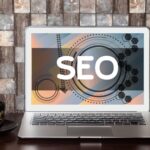Digital marketing encompasses a wide range of strategies businesses use to promote products or services through digital channels. Unlike traditional marketing, which relies on print ads, billboards, or TV commercials, digital marketing leverages the internet, mobile devices, and data-driven platforms to reach potential customers more directly and efficiently.
In today’s online marketing world, businesses aren’t just asking if they should invest in digital marketing. They’re asking which type will help them meet specific goals, whether it’s boosting website traffic, driving more conversions, or building customer loyalty. Understanding the various digital marketing tactics available is key to creating an integrated digital marketing strategy that aligns with your audience and budget.
In this guide, we’ll break down 12 essential types of digital marketing, provide practical examples of how each one works, and explain how to choose the best strategy or combination for your business.
1. Search Engine Optimization (SEO)
Search engine optimization, or SEO, is the process of improving your website so it ranks higher in search engine results pages (SERPs). The goal is to increase organic traffic from search engines like Google or Bing by targeting relevant keywords your audience is already searching for.
SEO efforts typically fall into three main areas:
- On-page SEO: Optimizing individual web pages with relevant keywords, meta tags, and high-quality content.
- Off-page SEO: Earning backlinks from other credible websites to build authority.
- Technical SEO: Enhancing the backend of your website, such as site speed, mobile-friendliness, and indexing, to support better rankings.
For example, a local business targeting “best pizza in Tampa” will want their web page optimized around that search term with helpful content, structured data, and fast mobile loading. SEO is a long-term investment, but it remains one of the most cost-effective digital marketing strategies for building organic visibility.
2. Pay-Per-Click Advertising (PPC)
Pay-per-click advertising (PPC) is a model where advertisers pay each time a user clicks on their digital ads. The most popular platform is Google Ads, but PPC can also include ads on Bing, YouTube, or even social media platforms.
What makes PPC effective is how immediate and targeted it can be. Businesses can appear at the top of search engine results almost instantly by bidding on specific keywords. For example, an e-commerce brand selling running shoes can bid on “best running shoes 2025” and appear above organic results.
With the right targeting, PPC is a great way to boost brand visibility, drive conversions, and test new markets, especially when paired with strong landing pages and keyword research.
3. Social Media Marketing (SMM)
Social media uses platforms like Facebook, Instagram, TikTok, LinkedIn, and X (formerly Twitter) to reach and engage with your audience. It includes both organic content (like regular social media posts) and paid ads (like boosted posts or sponsored stories).
This digital marketing type is particularly useful for brand awareness and relationship-building. A well-timed social media marketing campaign can generate buzz around a product launch or event. For example, a clothing brand might run a TikTok contest using a hashtag challenge to promote a new collection.
More than ever, social media advertising is data-driven. You can target ads based on age, interests, location, or behavior, making it one of the most flexible marketing channels available.
4. Content Marketing
Content marketing is the strategy of creating and distributing valuable, relevant content to attract and retain a clearly defined audience. This includes blog posts, ebooks, case studies, videos, webinars, and infographics.
Rather than pitching a product directly, content marketing builds trust by educating your audience. A company that sells accounting software might publish blog posts on “how to prepare for tax season” or “5 ways to simplify invoicing,” answering user questions while subtly promoting their product.
A successful content marketing strategy helps businesses rank for long-tail keywords, support SEO efforts, and move potential customers through the marketing funnel by providing high-quality content at each stage.
5. Email Marketing
Email marketing remains one of the most cost-effective forms of digital marketing. It allows businesses to communicate directly with their audience through personalized messages, newsletters, and promotions.
What makes email powerful is its segmentation and automation capabilities. You can send different messages based on user behavior, like abandoned cart reminders, welcome sequences, or birthday offers. Platforms like Brevo, Mailchimp, or Klaviyo make it easy to track open rates, click-through rates, and conversions.
If done right, email can increase customer retention, repeat purchases, and customer loyalty, making it a core component of any integrated digital marketing strategy.
6. Mobile Marketing (Including SMS)
With the rise of mobile devices, mobile marketing has become essential. This includes mobile-optimized websites, push notifications, mobile apps, and SMS marketing.
SMS or text message marketing is especially effective for local businesses. It boasts a 98% open rate and allows you to send time-sensitive promotions, reminders, or loyalty rewards. For example, a gym could text members about a flash sale on classes or send appointment confirmations.
Mobile marketing allows brands to meet customers where they are, on their phones, making it a direct and highly engaging channel, especially for businesses that rely on quick communication.
7. Affiliate Marketing
Affiliate marketing is a performance-based strategy where businesses pay partners (affiliates) a commission for driving traffic or sales. These affiliates promote products through blogs, websites, or social media, using tracked referral links.
It’s especially popular in e-commerce and SaaS, where products can be demonstrated through content like reviews or tutorials. For example, a beauty influencer might earn a commission for each skincare product purchased through their YouTube video link.
This strategy is low-risk for businesses because you only pay when results are delivered.
8. Influencer Marketing
Influencer marketing involves partnering with individuals who have built a following on social media or other digital platforms. These influencers create content that promotes your brand in a natural, often entertaining way.
This type of marketing works well for brands trying to build trust quickly. A micro-influencer with a loyal niche audience may drive more engagement than a celebrity with millions of followers.
When choosing influencers, it’s essential to evaluate engagement rates, authenticity, and whether their audience aligns with your target market.
9. Video Marketing
Video marketing is one of the most effective ways to capture and hold audience attention. Short-form videos, product demos, tutorials, and testimonials help businesses explain value quickly and visually. This format works especially well on platforms like YouTube, TikTok, and Instagram, where video is the dominant content type.
Video also supports your broader digital marketing strategy. It can improve search visibility, increase time-on-page, and drive higher engagement. Search engines like Google often prioritize content with embedded video, making it a smart addition to your SEO and content marketing efforts.
When used strategically, video can directly boost conversions. According to Google’s video ad conversion guide, optimizing video campaigns with clear calls to action and intent-based targeting can drive more meaningful results. Whether embedded on landing pages or used in paid campaigns, video helps turn viewers into customers.
10. Display Advertising
Display advertising includes banner ads, sidebar ads, and other visual promotions that appear across websites and apps. These ads can be static, animated, or even interactive.
They’re often used in retargeting, showing ads to users who previously visited your site but didn’t convert. For instance, after viewing a hotel booking page, you might see a discount ad while browsing another website.
Display ads are great for brand recall, especially when part of a larger marketing campaign.
11. Native Advertising
Native ads blend into the platform they’re published on, appearing as sponsored blog posts, product recommendations, or news articles. They match the form and function of the content surrounding them, making them feel less intrusive.
This format tends to perform better than traditional banner ads, as users perceive them as more informative. For example, a financial services company might sponsor an article on “how to create a monthly budget” on a finance blog.
Native advertising can be particularly effective for brands focused on storytelling and education.
12. Audio and Podcast Marketing
As podcasts continue to grow in popularity, audio marketing has become a unique channel for connecting with niche audiences. Brands can advertise on podcast episodes or even sponsor full podcast series.
Listeners often trust their favorite hosts, making podcast sponsorships feel more personal than traditional ads. For example, a meal delivery service might sponsor a health podcast that aligns with its target audience.
Audio marketing is still an emerging area but holds strong potential for brands seeking to diversify their marketing efforts.
How to Choose the Right Digital Marketing Type
Not every strategy will be a fit for every business. The right digital marketing technique depends on your goals, audience, and budget. Here’s a quick reference:
| Business Goal | Recommended Digital Marketing Type |
|---|---|
| Boost local visibility | SEO, mobile marketing (SMS), Google Ads |
| Drive quick conversions | PPC, email marketing, retargeting ads |
| Increase brand awareness | Social media, influencer marketing, and video ads |
| Build long-term authority | Content marketing, SEO, and podcast sponsorships |
| Strengthen loyalty/retention | Email, SMS, loyalty programs |
If you’re not sure where to begin, start with your audience—understand where they spend time online, what content they trust, and how they prefer to receive information.
Future Trends in Digital Marketing (2025 & Beyond)
The digital marketing world continues to evolve. In 2025, expect to see:
- More AI-driven content creation and ad targeting
- Growth in voice search and visual search
- Stronger emphasis on privacy-first marketing (fewer cookies, more consent-based strategies)
- A shift toward omnichannel experiences, delivering a consistent brand message across email, web, SMS, and social
Staying ahead of these trends will help digital marketers deliver better customer experiences and more measurable results.
Conclusion
Understanding the different types of digital marketing is essential for building a strategy that truly supports your business goals. Whether you’re focused on driving traffic, generating leads, or increasing customer loyalty, each channel offers unique advantages. The most effective digital marketing campaigns often combine multiple approaches to reach the right audience, at the right time, with the right message. As trends and technologies evolve, staying informed and adapting your strategy is key to long-term success.
At ChitChat Marketing, we help businesses like yours cut through the noise with tailored digital marketing strategies that drive real results. From SEO and content creation to SMS campaigns and social media, our team knows how to reach your audience where it matters most. Want to build a strategy that actually grows your brand? Contact us today and let’s make your marketing work smarter.
FAQs
What are the 4 types of digital marketing?
The four commonly referenced types include SEO, content marketing, social media marketing, and PPC. These represent the core pillars of most digital marketing campaigns, balancing both organic and paid strategies.
What are the 7 types of digital marketing?
The seven types often include SEO, PPC, social media marketing, content marketing, email marketing, mobile marketing, and affiliate marketing. These cover a broader range of customer touchpoints across digital channels.
What are the 8 types of digital marketing?
Some frameworks list eight types by adding influencer marketing to the standard mix. These include: SEO, content, social, PPC, email, mobile, affiliate, and influencer marketing. Each type plays a distinct role in reaching and engaging potential customers across various digital channels.
What are the top 10 types of digital marketing?
The top 10 digital marketing types include: SEO, PPC, content marketing, social media, email, mobile/SMS, affiliate, influencer, video marketing, and display advertising. Each offers unique benefits depending on your goals and resources.




